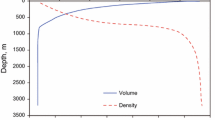The CO2 enhanced oil recovery(EOR) technology is widely utilized in the development of shale oil reservoirs. However, reservoir plugging issues often occur during the CO2 injection process, leading to reduced onsite development efficiency. Currently, the mechanism behind reservoir plugging is still unclear. Therefore, this research selects Jimsar crude oil from Xinjiang to conduct CO2 displacement experiments on shale cores and analysis of crude oil components. A comparative analysis is conducted with previous studies to explore the plugging mechanism. The research results demonstrate that core plugging occurs when the displacement pressure exceeds 25 MPa, resulting in a significant decrease in core permeability. Under a displacement pressure of 40 MPa, the additional resistance accounts for as much as 72% of the total resistance, with high asphalt content and the extractive effect of CO2 on crude oil components being important factors leading to core plugging. Therefore, in the field development process, the CO2 enhanced oil recovery technology should be applied in a rational and tailored manner according to the properties of the field’s crude oil.






Similar content being viewed by others
References
Caineng Z., Rukai Z., Bin B., et al. First discovery of nano-pore throat in oil and gas reservoir in China and its scientific value. Acta Petrolei Sinica, 2011, 41(1):1-12.
Ma Yongsheng, Cai Xunyu, Zhao Peirong, et al. Geological characteristics and exploration practices of continental shale. Acat Geologica Sinica, 2022, 96 (1):155-171.
Yang Feng, Ning Zhengfu, Hu Changpeng, et al .Characterization of microscopic pore structures in shalereservoirs. Acta Petrolei Sinica, 2013, 34(2):301-311.
Wang Ruifei, Shen Pingping, Song Ziqi, et al. Characteristics of micro-pore throat in ultra-low permeability sandstone reservoir. Acta Petrolei Sinica, 2009, 30(4):560–563.
Zou Caineng, Yang Zhi, Zhu Rukai, et al. Progress in China’s unconventional oil & gas exploration and development and theoretical technologies. Acta Geologica Sinica, 2015, 89(6):979-1007.
Brownscombe E. R., Dyes A. B., Whorton L. P. Method for producing oil by means of carbon dioxide: US, 1952.
Brush R., James H., Aimar O. B., et al. Immiscible CO2 Flooding for Increased Oil Recovery and Reduced Emissions. Society of Petroleum Engineers, 2000.
Yuan Shiyi, Wang Qiang, Li Junshi, et al .Technology progress and prospects of enhanced oil recovery by gas injection. Acta Petrolei Sinica, 2020, 41(12):1623-1632.
Hu Yongle, Hao Mingqiang, Chen Guoli, et al. Technologies and practice of CO2 flooding and sequestration in China. Petroleum Exploration and Development, 2019, 46 (4):716-727.
Qin Jishun, Li Yongliang, Wu Debin. CCUS global progress and China’s policy suggestions. Petroleum Geology and Recovery Efficiency, 2020, 27(1):20-28.
Zhang Hailong. Practice and understanding of enhancing the oil recovery by CO2 miscible flooding. Petroleum Geology & Oilfield Development in Daqing, 2020, 39(2):114-119.
Gao S. S., Xue H., Hu Z. M., et al.Experimental study on microscopic mechanism of CO2 flooding at high temperature andhigh pressure. Special Oil and Gas Reservoirs, 2010, 17(2):18-21.
Wabg Chen, Li Tiantai, Gao Hui., et al. Microscopic damage mechanism of asphaltene deposition on cores during CO2 flooding. Xinjiang Petroleum Geology, 2017, 38(5):602-606.
Jia Ying, Sun Lei, Sun Liangtian, et al.The asphaltene deposition mechanism in oil reservoir. Journal of Southwest Petroleum Institute, 2006, 28(6):60-64.
Srivastava R. K., Huang S. S., Dong M. Asphaltene Deposition During CO2 Flooding. SPE Production & Facilities, 1999, 14(4):235-245.
Zhou Tuo, Liu Xuewei, Yang Zhengming, et al. Experimental analysis on reservoir blockagemechanism for CO2 flooding. Petroleum Exploration and Development, 2015, 42 (4):502-506.
The National Development and Reform Commission of the People’s Republic of China. SY/T 5119-199 Rock soluble organic matter andcrude oil component column chromatography analysis methods. Beijing: Petroleum Industry Press, 2008.
The National Development and Reform Commission of the People’sRepublic of China. SY/T 0542-1994 Stable light hydrocarboncomponent analysis gas chromatographic method. Beijing:Petroleum Industry Press, 2008.
Acknowledgements
This study was financially supported by the research and application of Research on shale oil and gas development mechanism and volume development technology, Major scientific andtechnological project of China National Petroleum Corporation (Grant No. 2023ZZ08). The funders had no role in study design, data collection and analysis, decision to publish, or preparation of the manuscript.
Author information
Authors and Affiliations
Corresponding author
Additional information
Translated from Khimiya i Tekhnologiya Topliv i Masel, No. 1, pp. 167–175, January–February, 2024
Rights and permissions
Springer Nature or its licensor (e.g. a society or other partner) holds exclusive rights to this article under a publishing agreement with the author(s) or other rightsholder(s); author self-archiving of the accepted manuscript version of this article is solely governed by the terms of such publishing agreement and applicable law.
About this article
Cite this article
Whenchen, S., Xuewei, L., Shengchun, X. et al. Study on the Plugging Mechanism of Carbon Dioxide Oil Drive in Shale. Chem Technol Fuels Oils 60, 228–237 (2024). https://doi.org/10.1007/s10553-024-01674-1
Published:
Issue Date:
DOI: https://doi.org/10.1007/s10553-024-01674-1



